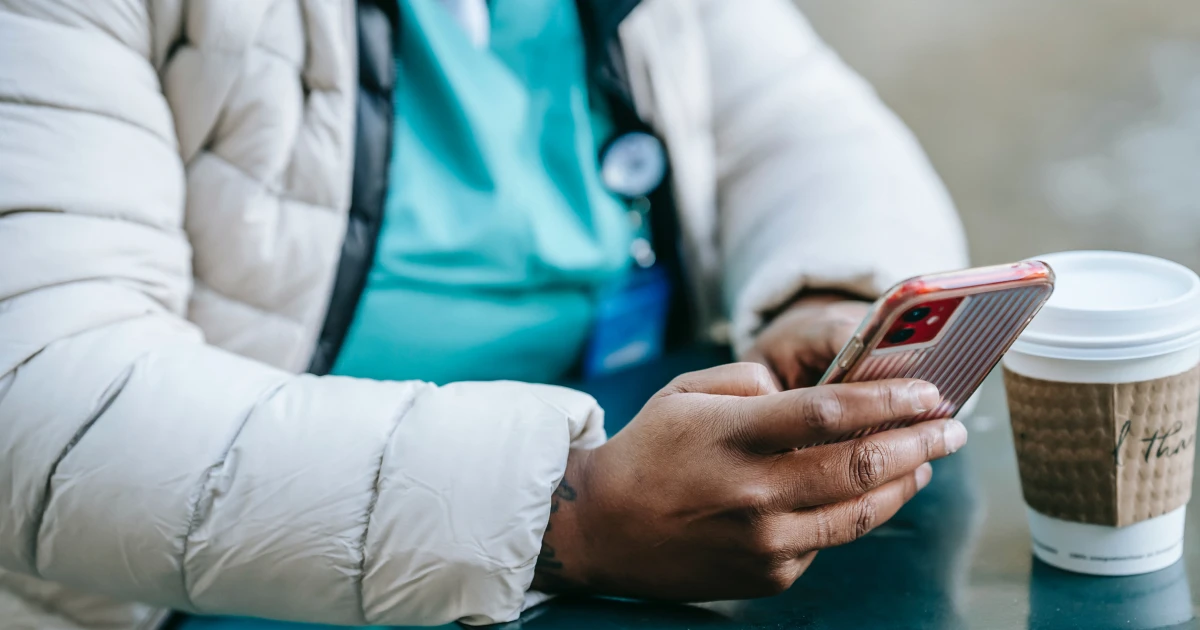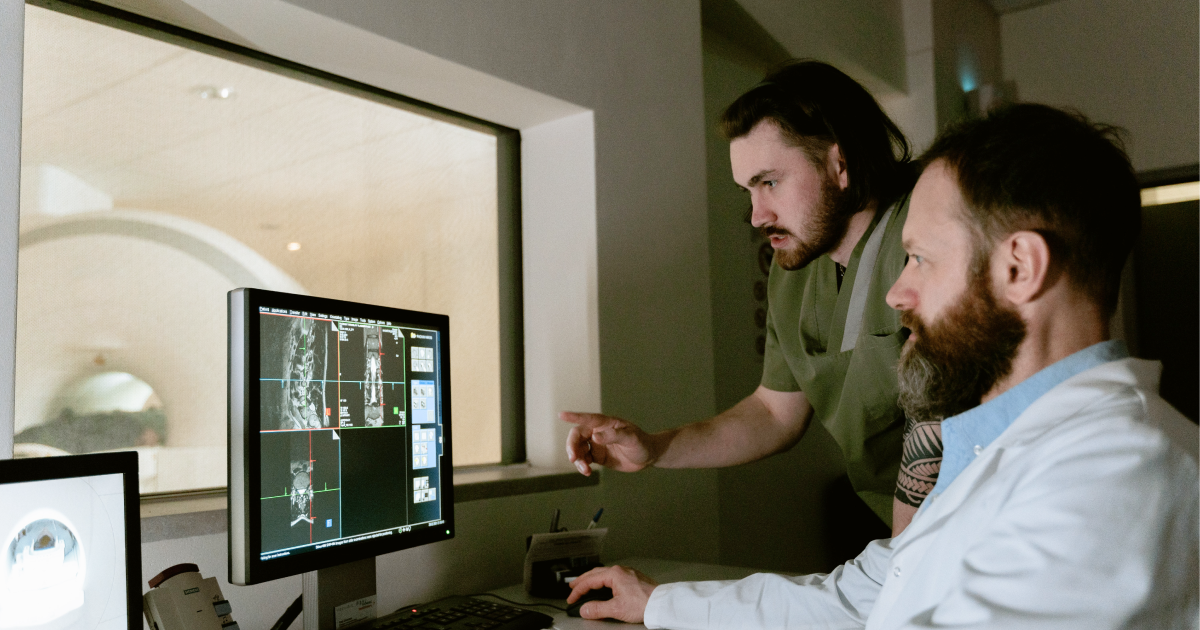
How to get mobile app HIPAA compliance
Jun 30
7 min read
With the continuous growth of the health tech sector, the digital transformation of patient data, and the emergence of new medical devices, the use of healthcare applications for clients and professionals has never been more prevalent. With so much sensitive patient information moving online, data safety has become a top concern among app users and, by extension, the tech firms who create them.
Healthcare applications dealing with confidential data must comply with HIPAA regulations to avoid hefty fines and maintain patient information security and integrity. Taking the time to understand these principles is critical, as around 90% of healthcare applications in the US have encountered information leaks that resulted in substantial financial losses.
HIPAA considerations introduce additional complexity into the already challenging business of developing a healthcare application. This article highlights some key requirements in this space, along with some steps to set up your product for compliance.
What is HIPAA compliance?
In the US, anyone providing treatment, payment, and operations in healthcare has been required to comply with the Health Insurance Portability and Accountability Act (HIPAA) since 1996. HIPAA provides regulations for companies dealing with protected health information (PHI), requiring them to install appropriate security measures and follow them. These measures have multiple layers involving physical, network, and process security, which are meant to protect PHI from leaking, security attacks, and any type of unauthorized use.
Who needs to comply with HIPAA?
Although this article focuses on mobile app HIPAA compliance, it is essential to mention that anyone with access to patient information must be HIPAA compliant. This includes business associates and other entities such as contractors and related business associates.
Beyond compliance
HIPAA laws lay out regulatory standards for the lawful use of PHI and are enforced by the Office for Civil Rights. When we talk about compliance with the law, however, it is essential to note that achieving a high level of security is not only crucial for getting the green light from HIPAA, but also for protecting the security and integrity of our healthcare system as a whole. After all, patient trust is critical for the effective functioning of this system. Treating HIPAA compliance as a living culture and implementing and maintaining it within your organization will ensure the highest levels of trust and security–and improve your odds of success in health tech.
The HITECH Act and HITRUST Framework
In addition to HIPAA considerations, healthcare app creators must also follow the guidelines of the Health Information Technology for Economic and Clinical Health Act (HITECH) and the Health Information Trust Alliance (HITRUST) framework.
What is the HITECH Act?
The scope of the HIPAA Act was extended through regulations established in the HITECH Act of 2009. This document augments existing HIPAA policies by encouraging healthcare providers to adopt electronic health records (EHR) while improving data privacy and security. As a result, healthcare providers are incentivized to adopt EHRs, stick to stricter privacy and security measures, and avoid hefty fines for violating the regulations.
What is the HITRUST framework?
The Health Information Trust Alliance created the Common Security Framework (CSF) to help healthcare organizations and providers demonstrate their compliance with security standards. This framework builds on the HIPAA and HITECH Act, providing a benchmark for cloud services and covered health entities to assess and certify their compliance.
When designing a healthcare app, it is vital to consider the requirements and recommendations of HIPAA, the HITECH Act, and the HITRUST framework as you plan out how your solution will manage healthcare data.

Why is HIPAA compliance important?
HIPAA compliance is imperative for all health applications that share and store PHI. HIPAA regulations must be followed to protect healthcare data's privacy, integrity, and confidentiality.
Several companies have sustained massive fines and disastrous reputation hits due to noncompliance with HIPAA. Insufficient protection of healthcare data leaves users open to identity theft, blackmail, scams, and phishing attacks, with potentially ruinous results to the negligent app creators. Depending on the level of carelessness, companies can be fined up to $50,000.
The high value of PHI means that the makers and managers of healthcare apps must be especially vigilant in thwarting privacy and security threats.
How to make an app HIPAA compliant
While different health tech products will need to consider different aspects of HIPAA, there are several steps most app creators will want to consider to achieve a high level of compliance. All safeguards must comply with the HIPAA Security Rule and be characterized by all of the following measures.
- Administrative Safeguards - These concern access, control, and training measures for compliance implementation. These include:
- self-audits
- plans for remediation
- proper employee training and policies
- appropriate documentation
- incident management
- business associate management
- Physical Safeguards - These measures concern decisions about who has access to the data and how that access is managed. These include:
- high-level database, server, and data transfer protection
- healthcare wearables protection
- appropriate data storage
- Technical Safeguards - These measures concern everything the app must do when handling PHI. Technical safeguards include:
- implementation of a user authentication system
- user identification procedures
- automatic log-off
- emergency data access protocols
- no PHI data exchange through email subscriptions and push notifications
- making backups and logs leakproof
- limited time for storing data and automatic hardcore removal
In order to achieve compliance with all these safety measures, it can be helpful to follow a checklist. The next section may help ensure that you have taken all the necessary steps to achieve compliance.
Access control
According to the HIPAA Privacy Rules, no one should be able to access protected health information unless it is strictly required for carrying out their responsibilities. A HIPAA-compliant healthcare application must impose restrictions on who can access and alter confidential information.

Secure person or entity authentication
Compliant solutions must Implement authentication methods that help monitor and manage which users are accessing PHI. The following techniques for assigning privileges are recommended to ensure safety and compliance: biometrics (voice or face ID), password protection, distinguishing proof (key, card, or token), or personal identification number (PIN).
Ensure transmission security
You must ensure that PHI transmitted over a mobile device’s network is encrypted, guaranteeing its security. When you use the HTTPS protocol, it encrypts the confidential data into a series of characters that are only readable with the appropriate keys. Using this secure protocol for all your data transmissions will ensure confidentiality.
Use proper PHI disposal
Once PHI is no longer needed, the HIPAA requirements state that it must be destroyed, including any copies and backups. You must also install preventative measures for incidental and prohibited use of PHI and dispose of it properly.
Ensure data backup and storage
The safety of your data storage system is paramount, but unfortunately, there is no absolute protection against data loss. To avoid problems associated with such events, you must create a full digital copy and store it in another data center to help you achieve maximum security.
Evaluate audit controls
Audits are an essential part of being HIPAA compliant, and the absence of audit controls can result in higher fines. Your app should be equipped with systems that record all interactions with PHI within your framework, which can be pulled together quickly and coherently in case of an audit.
Apply encryption
Applying encryption at every level of data storage (not just transmission) is indispensable and a requirement for HIPAA compliance. Without encryption, unauthorized individuals can easily access and read confidential data.
Ongoing maintenance
One of the cornerstones of security is the ongoing maintenance of your app, ensuring its stability and efficiency. You must implement regular maintenance processes to ensure your application is safe, stable, and free from all types of glitches. The ongoing statistical and dynamic testing of your product is necessary to maintain the optimal integrity of your system.
Automatic log-off
The HIPAA Security Rule requires all covered entities and related businesses to implement automatic log-off. Users often fail to sign out of their accounts, leaving systems vulnerable to data theft or loss. To bolster security, app creators must implement measures to ensure that apps automatically log users out after a specified period of inactivity.
WCAG compliance for accessibility
The Web Content Accessibility Guidelines (WCAG) define how to make web content more accessible for everyone. There are no separate guidelines for mobile applications, but the general ones can be applied within a native app context. Making your app WCAG-compliant will enhance HIPAA compliance, as accessibility is one of the main concerns of HIPAA. In particular, you must design your application to be accessible for people with visual, auditory, physical, speech, cognitive, language, learning, and neurological disabilities. Following these guidelines will also ensure that you will avoid accessibility lawsuits, which are common in the healthcare industry.
Key Takeaways
For any application that handles PHI, US law requires compliance with HIPAA rules. HIPAA guidelines comprise a holistic approach to comply with specific security standards that ensure PHI safety and confidentiality.
Several layers of security must be considered when designing your health app, including administrative, technical, and physical safeguarding measures. Moreover, to maximize the safety of patients’ protected health information, digital health creators must ensure the continuous maintenance of the security systems that preserve the integrity of a health tech application.
Mike Biglan
Founder and CEO Mike Biglan has led the creation of transformative digital products adopted by millions of users–including digital therapeutics, AI-powered RPM platforms, an X-Prize-winning adult literacy intervention, and more. Mike also led the creation of Marco Polo, an acclaimed consumer-facing video messaging/streaming app with tens of millions of downloads.
by this author




